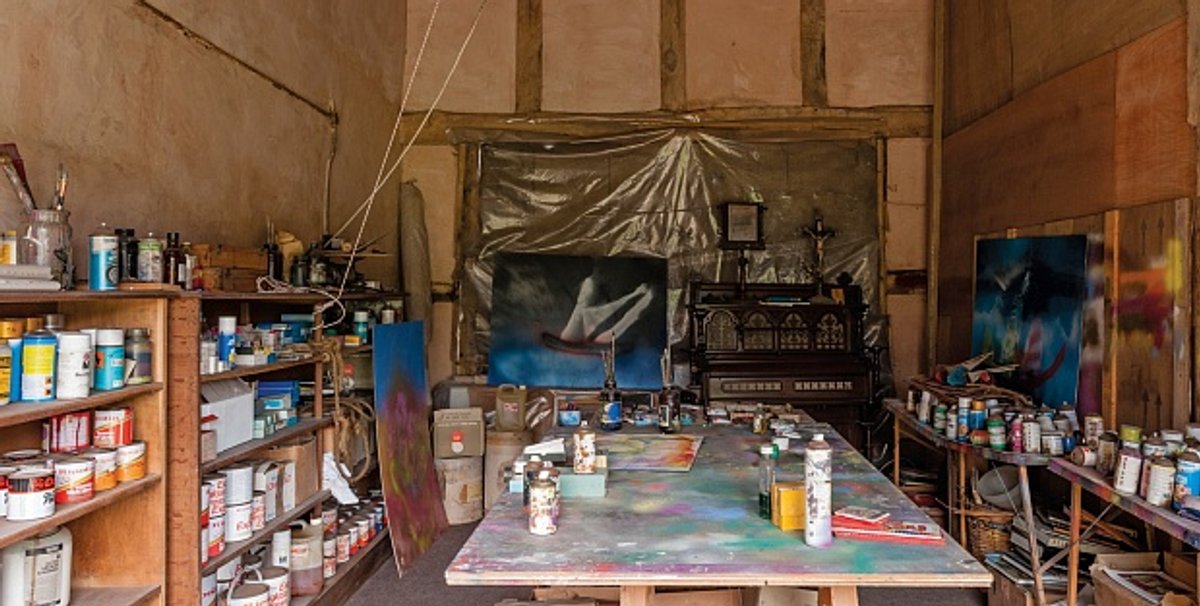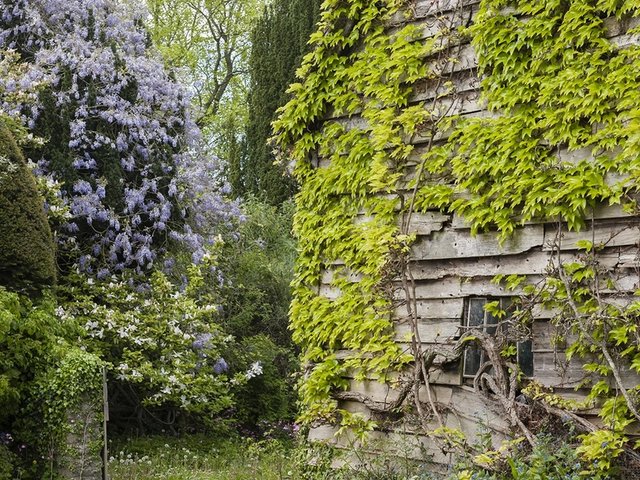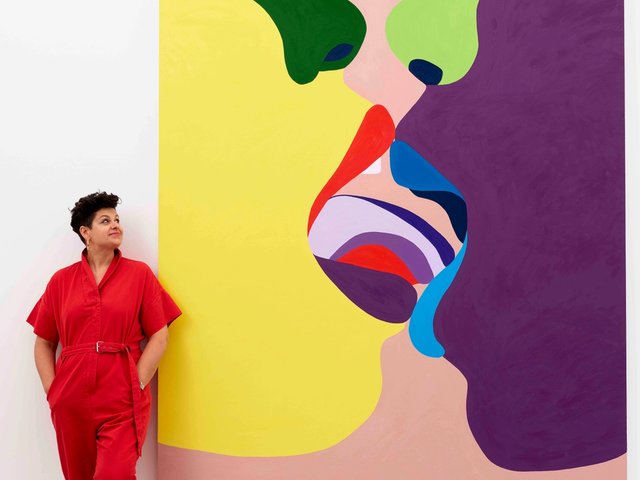A workbench littered with cans of spray paint in every imaginable colour, boxes overflowing with tubes of acrylic paint, toy trucks, forks, a pipe organ with a crucifix sitting on top of it, a jar containing what appears to be a fish preserved in formaldehyde, pairs of eyeglasses and shoes, a Second World War-era Vickers machine gun case and a London A to Z guide. When the Australian-born artist Sidney Nolan died in the UK in 1992, where he had moved in 1951, his widow closed the doors to his studio, preserving everything inside just as Nolan had left it. This summer, the charitable trust that runs the Rodd—Nolan’s 250-acre farm in Herefordshire—is temporarily opening his studio to visitors as part of celebrations to mark the centenary of the artist’s birth.

Before the studio could be opened to the public, the Australian conservator and Nolan specialist Paula Dredge was brought in to examine and conserve its contents. She was confronted by a huge stockpile of paint, particularly Ripolin, a commercial enamel paint that Nolan began to use in the early 1940s, and which quickly became a favourite of the artist’s. Dredge says that Nolan preferred household or commercial paints to traditional artists’ oil paints because they dried more quickly. “He worked very, very fast,” she says. Nolan’s desire to paint quickly led him to use spray paint late in life, having used the medium back in the early 1930s, when he worked in a factory, spray-painting glass signs. “The dates on three spray-paint works show that they were all created in a single day,” she says.
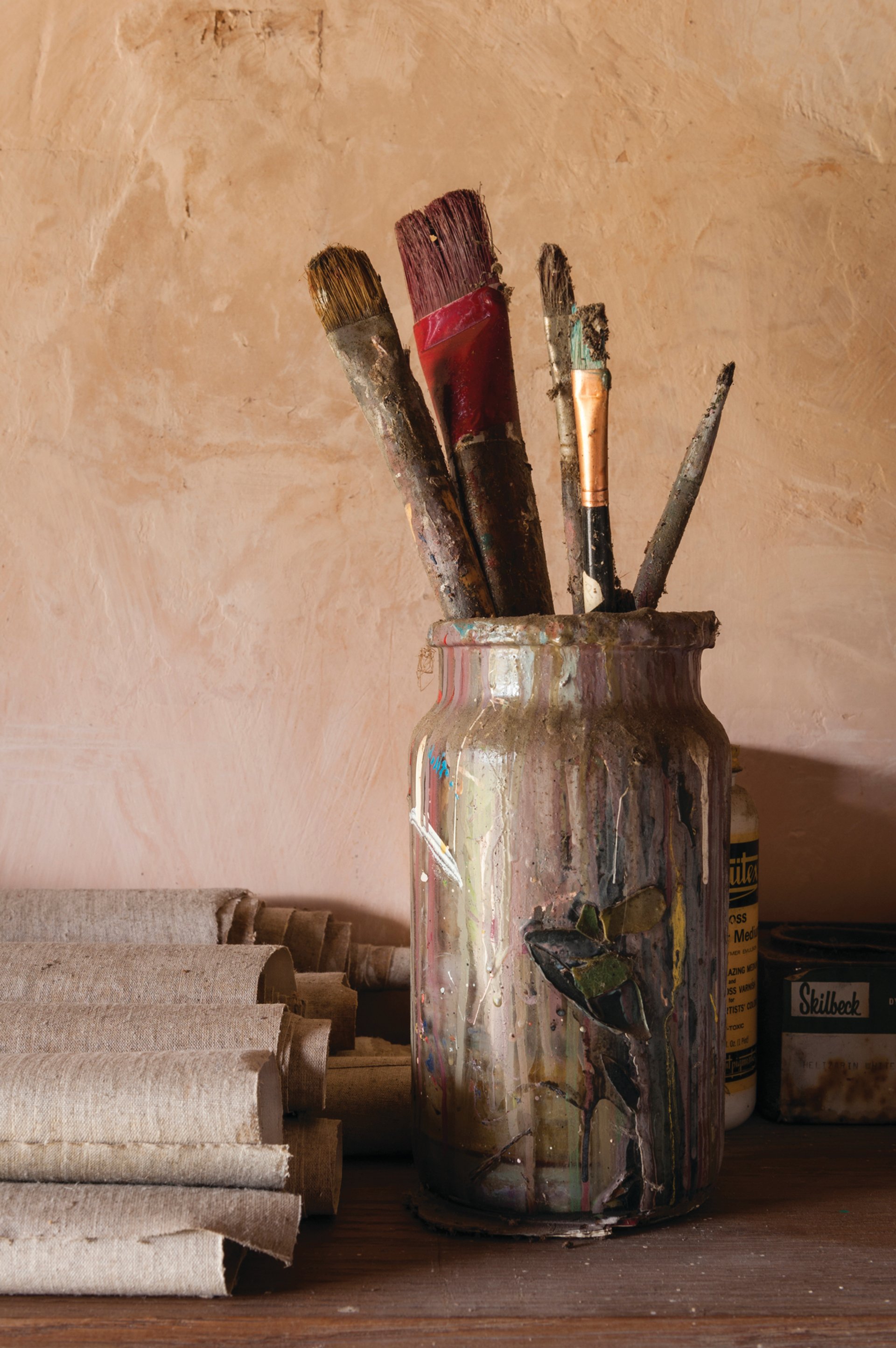
The artist, best known for his series of portraits of the 19th-century outlaw Ned Kelly, liked to experiment with paints and materials. “He embraced new paints as soon as they came out and used them in a way in which they were not necessarily supposed to be used,” Dredge says. Nolan was an early adopter of polyvinyl acetate (PVA)—a “white glue” that he mixed with pigment to create his own paint—in the 1950s. A large supply of PVA was found in his studio. Dredge also found a supply of clear coating (in spray form) in a box. Loose cans were found on Nolan’s workbench, next to his paint, which suggests that he used it during the creation of his compositions.
Nolan used the adjoining barn to work on larger pieces. His choice of materials meant that his canvas had to be flat while he worked, so that the paint would not run. In the barn, he installed a contraption with a platform, suspended from the eaves of the building, on which he worked. “He would turn up the music and get an assistant to pull him around on this sledge suspended in the air, so he could reach all areas of the canvas,” says Anthony Plant, the director of the Sidney Nolan Trust. “He was still doing this well into his 70s.” Nolan also liked to view his paintings at height, which could be done via this specially rigged platform, from a ladder or by using binoculars the wrong way around. A pair of old, paint-encrusted binoculars are included in an exhibition at the Rodd of rarely exhibited works by Nolan. The show and studio are open to the public until 29 August.
Trust seeks £2.3m for new art centre
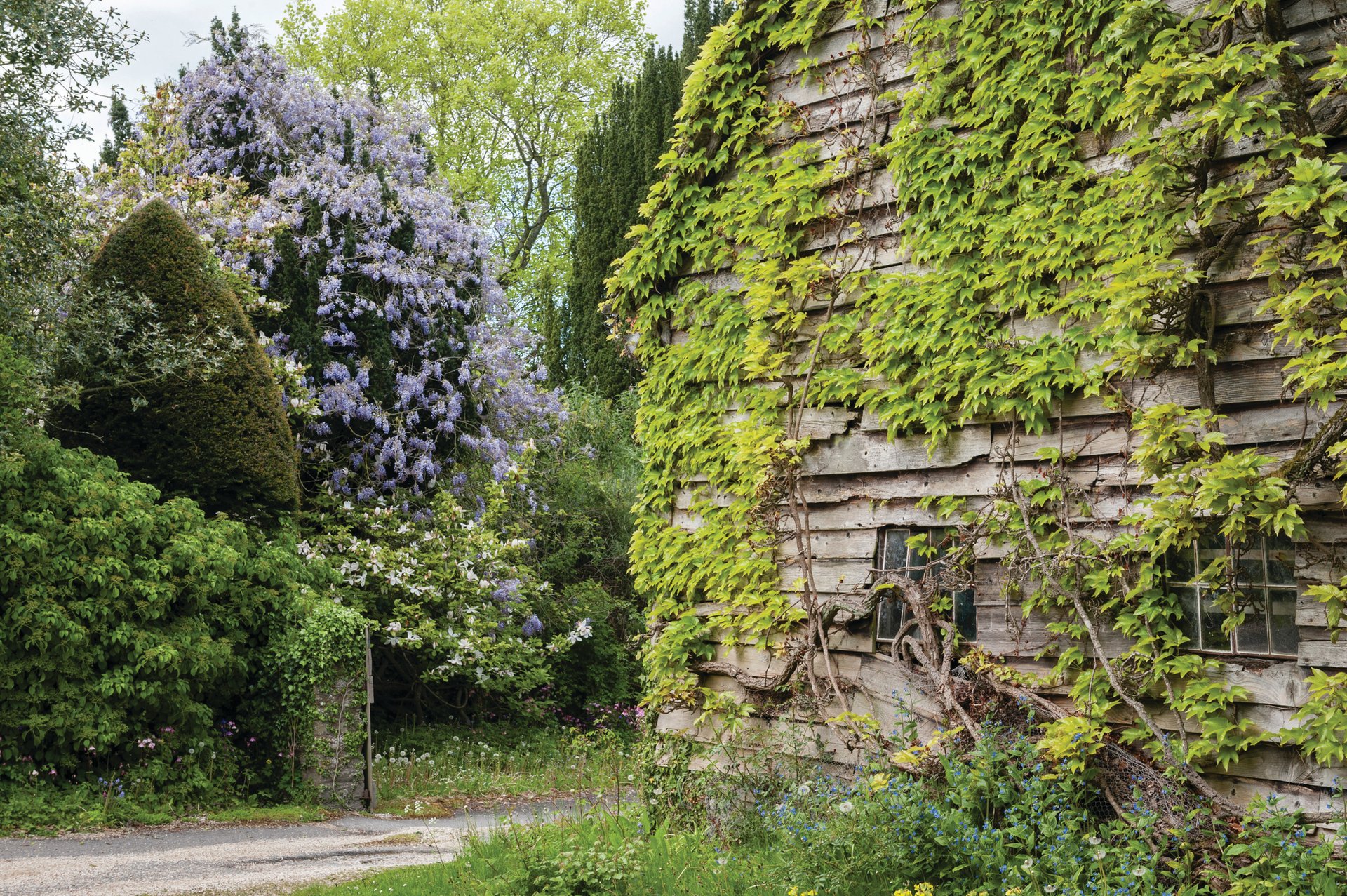
The UK’s Sidney Nolan Trust has launched a campaign to raise £2.3m to create “an international centre of artistic practice, research and engagement” on the late 20th-century Australian artist’s estate on the Welsh borders. The plan is to refurbish a series of 17th-century barns on the farm to create artists’ studios on the ground floor and a permanent gallery dedicated to Nolan (1917-92) on the first floor. The trust already hosts artists’ residencies in a modern grain barn on the property, but this building also requires renovation, and a nearby 12-bedroom farmhouse needs to be upgraded so that it can serve as artist accommodation. “Nolan wanted to create a place in this special part of the world to inspire artists and enable them to explore,” says the director of the trust, Anthony Plant.


